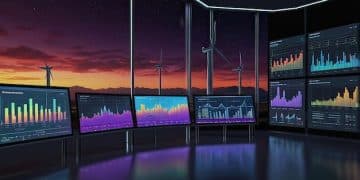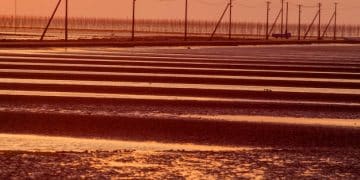Integrating DERs into the US Grid: Opportunities and Challenges
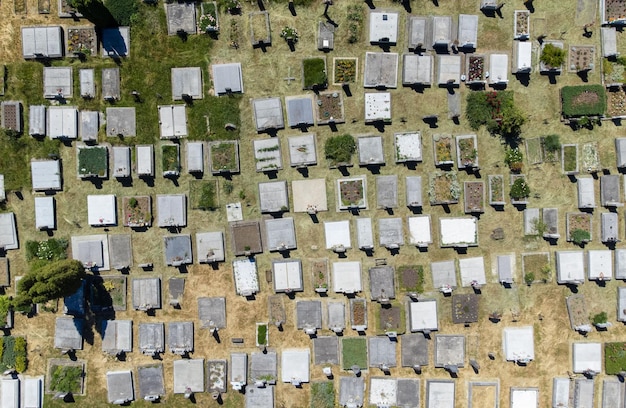
Integrating Distributed Energy Resources (DERs) into the US grid presents significant opportunities such as enhanced grid resilience and reduced carbon emissions, but also poses considerable challenges including grid stability maintenance and regulatory hurdles.
The integration of Distributed Energy Resources (DERs) is rapidly transforming the US energy landscape. Understanding what are the opportunities and challenges of integrating Distributed Energy Resources (DERs) into the US grid is crucial for navigating this transition effectively.
Understanding Distributed Energy Resources (DERs)
Distributed Energy Resources (DERs) are transforming the way energy is generated, distributed, and consumed. These resources are typically smaller in scale and located closer to consumers, offering a variety of benefits and challenges to the traditional centralized grid system.
What are DERs?
DERs encompass a wide range of technologies that produce energy at or near the point of consumption. This localized approach to energy generation has the potential to enhance grid resilience and reduce transmission losses.
Types of DERs
DERs include solar photovoltaic (PV) systems, wind turbines, energy storage systems (like batteries), combined heat and power (CHP) systems, and electric vehicles (EVs). Each type offers unique capabilities and contributes differently to the overall energy mix.
- Solar PV systems harness sunlight to generate electricity directly on rooftops or in local solar farms.
- Wind turbines convert wind energy into electricity, often found in rural areas or coastal regions.
- Energy storage systems store excess energy for later use, helping to balance supply and demand.
- CHP systems generate both electricity and heat from a single fuel source, increasing energy efficiency.
The integration of DERs is gradually reshaping the energy grid, making it more decentralized and flexible. As adoption increases, understanding their opportunities and challenges becomes essential for policymakers, utilities, and consumers.
Opportunities of DER Integration in the US Grid
Integrating Distributed Energy Resources (DERs) into the US grid offers numerous opportunities to enhance the reliability, sustainability, and efficiency of the energy system. These benefits span environmental, economic, and operational dimensions, making DERs a key component of future energy strategies.
Enhanced Grid Resilience
DERs can significantly improve grid resilience by providing localized power generation and backup during outages. This distributed approach reduces dependence on centralized power plants and long transmission lines, which are vulnerable to disruptions.
Reduced Carbon Emissions
By incorporating renewable DERs like solar and wind, the US grid can significantly reduce its carbon footprint. These clean energy sources help to displace fossil fuel-based generation, contributing to climate change mitigation efforts.
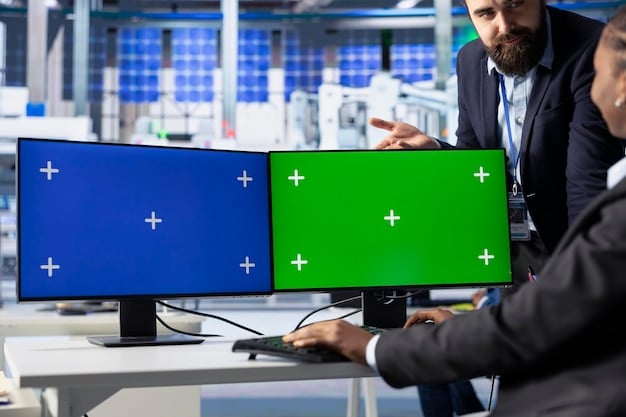
- DERs enable consumers to generate their own power, reducing reliance on the grid during peak demand.
- Microgrids powered by DERs can operate independently during grid outages, ensuring continuous power supply to critical facilities.
- Renewable DERs help to diversify the energy mix and reduce dependence on fossil fuels.
The opportunities presented by DER integration are substantial, offering a pathway towards a more sustainable, reliable, and efficient energy future for the United States. Recognizing and capitalizing on these benefits is crucial for driving the energy transition forward.
Challenges of DER Integration in the US Grid
While integrating Distributed Energy Resources (DERs) into the US grid presents numerous opportunities, it also poses significant challenges that need to be addressed to ensure a smooth and efficient transition. These challenges range from technical to regulatory and economic aspects.
Maintaining Grid Stability
One of the primary challenges is maintaining grid stability with intermittent DER outputs. Solar and wind power, for example, vary depending on weather conditions, which can create fluctuations in energy supply. These fluctuations need to be carefully managed to prevent grid imbalances and potential outages.
Regulatory Hurdles
Existing regulatory frameworks are often not designed to accommodate the unique characteristics of DERs. Net metering policies, interconnection standards, and market rules may need to be updated to facilitate DER integration and ensure fair compensation for DER owners.
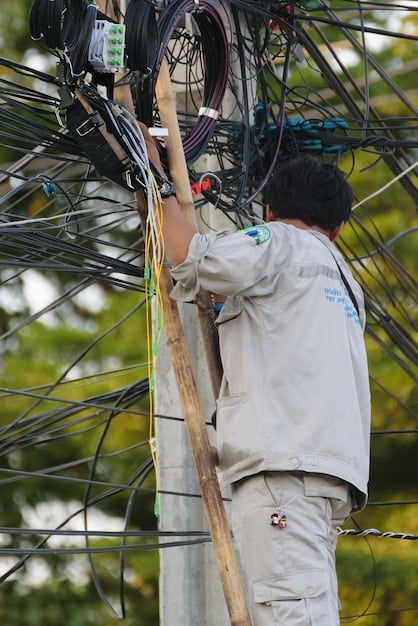
- Grid operators need to develop advanced forecasting tools to predict DER output and plan accordingly.
- Energy storage systems can help to mitigate intermittency by storing excess energy for later use.
- Standardized interconnection procedures are needed to streamline the process for connecting DERs to the grid.
Addressing these challenges is critical for realizing the full potential of DERs and ensuring that they contribute to a reliable and sustainable energy system. Overcoming these hurdles requires collaboration among policymakers, utilities, and DER owners to create a supportive and adaptive regulatory environment.
Technical Considerations for DER Integration
Integrating Distributed Energy Resources (DERs) into the US grid requires careful consideration of various technical aspects to ensure the grid’s reliability, safety, and efficiency. These considerations involve grid modernization, advanced technologies, and cybersecurity measures.
Grid Modernization
The existing grid infrastructure may need upgrades to accommodate the influx of DERs. Smart grids with advanced sensors, communication networks, and control systems are essential for managing the distributed nature of DER generation and consumption.
Advanced Technologies
Advanced technologies such as smart inverters, microgrids, and energy management systems play a crucial role in DER integration. These technologies enable better control, coordination, and optimization of DER resources.
- Smart inverters regulate the flow of power between DERs and the grid, ensuring stable and reliable operation.
- Microgrids provide localized energy generation and control, enhancing resilience during grid outages.
- Energy management systems optimize energy use and reduce costs by coordinating DER output and demand response.
By addressing these technical considerations, the US grid can effectively integrate DERs while maintaining its reliability, safety, and efficiency. Investing in grid modernization and advanced technologies is essential for realizing the full potential of DERs in transforming the energy system.
Economic and Policy Implications of DERs
The integration of Distributed Energy Resources (DERs) into the US grid has significant economic and policy implications that need to be carefully considered. These implications affect utility business models, market structures, and consumer incentives.
Impact on Utility Business Models
DERs challenge traditional utility business models by reducing electricity sales and increasing the need for grid services. Utilities need to adapt by offering new services, such as DER management and grid stabilization, to maintain revenue and profitability.
Market Structures and Competition
DERs promote competition in the energy market by allowing consumers to generate their own power and participate in demand response programs. Competitive market structures can drive innovation and reduce energy costs.
- Net metering policies provide financial incentives for DER owners to sell excess energy back to the grid.
- Demand response programs encourage consumers to reduce energy consumption during peak demand, lowering grid stress and costs.
- Incentive programs, such as tax credits and rebates, can accelerate DER adoption by reducing upfront costs.
Addressing these economic and policy implications is crucial for creating a level playing field for DERs and ensuring that they contribute to a competitive and sustainable energy market. Clear and consistent policies are needed to incentivize DER adoption and promote innovation in the energy sector.
Future Trends in DER Integration
The future of Distributed Energy Resources (DERs) in the US grid looks promising, with several key trends shaping their integration and impact. These trends include advancements in technology, evolving regulatory frameworks, and increasing consumer adoption.
Advancements in Technology
Ongoing advancements in energy storage, smart grid technologies, and artificial intelligence will further enhance the capabilities and efficiency of DERs. These technologies will enable better coordination, optimization, and control of DER resources.
Evolving Regulatory Frameworks
Regulatory frameworks are expected to evolve to better accommodate DERs, with more streamlined interconnection procedures, fair compensation mechanisms, and innovative market designs. These changes will create a more supportive and predictable environment for DER adoption.
- Smart contracts and blockchain technology can facilitate peer-to-peer energy trading and streamline transactions between DER owners and consumers.
- Virtual power plants (VPPs) aggregate multiple DERs to provide grid services, such as frequency regulation and capacity reserves.
- Electrification of transportation and heating will increase demand for DERs, driving innovation and market growth.
As DER technology continues to advance and regulatory frameworks adapt, the role of DERs in the US grid will become increasingly important. These future trends offer a pathway towards a more decentralized, resilient, and sustainable energy system for the United States.
| Key Aspect | Brief Description |
|---|---|
| 💡 DER Definition | Smaller-scale energy resources located near consumers. |
| 🌱 Opportunities | Enhanced grid resilience, lower emissions, and cost savings. |
| 🚧 Challenges | Grid stability, regulatory hurdles, and technical issues. |
| 🔮 Future Trends | Tech advancements, evolving regulations, and increased adoption. |
Frequently Asked Questions (FAQ)
▼
DERs include solar PV systems, wind turbines, energy storage systems like batteries, combined heat and power (CHP) systems, and electric vehicles (EVs).
▼
DERs provide localized power generation and backup during outages, reducing dependence on centralized power plants and vulnerable transmission lines.
▼
Challenges include maintaining grid stability, addressing regulatory hurdles, managing technical complexities, and updating utility business models.
▼
Smart grids with advanced sensors, communication networks, and control systems are essential for managing the distributed nature of DER generation and consumption.
▼
Future trends include advancements in technology, evolving regulatory frameworks, increasing consumer adoption, and innovative market designs.
Conclusion
Integrating Distributed Energy Resources (DERs) into the US grid presents a transformative opportunity to create a more resilient, sustainable, and efficient energy system. While significant challenges remain, ongoing advancements in technology, evolving regulatory frameworks, and increasing consumer adoption are paving the way for a future where DERs play a central role in meeting the nation’s energy needs.
